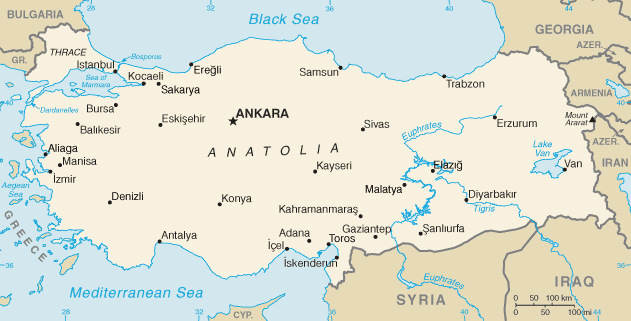This is an old revision of this page, as edited by Bkell (talk | contribs) at 11:25, 10 April 2004 (tu-map.jpg -> Tu-map.png). The present address (URL) is a permanent link to this revision, which may differ significantly from the current revision.
Revision as of 11:25, 10 April 2004 by Bkell (talk | contribs) (tu-map.jpg -> Tu-map.png)(diff) ← Previous revision | Latest revision (diff) | Newer revision → (diff)Anatolia (Greek for east), also called by the Latin name of Asia Minor, is a region of Southwest Asia which corresponds today to the Asian portion of Turkey.
Because of its strategic location at the intersection of Asia and Europe, Anatolia has been a cradle for several civilizations since prehistoric ages, with neolithic settlements such as Catal Höyük (pottery neolithic), Cayönü (PPN), Nevali Cori (PPN B), Hacilar (pottery neolithic) and Göbekli Tepe (PPN A) and Mersin. The settlement of Troy starts in the Neolithic, but continues up into the Iron age.
Major civilizations and peoples that have settled in or conquered Anatolia include the Hattian, Hittites, Phrygians, Cimmerians, Lydians, Persians, Celts, Tubals, Meshechs, Greeks, Pelasgians, Armenians, Roman Empire, Goths, Kurds, Byzantine Empire, Seljuk Turks and Ottoman Empire.
While long being a blend of ethnic influences, historical Anatolia was largely a part of the European ethnic-sphere, whereas the Anatolia of today is primarily Turkic and Middle-Eastern in nature.
